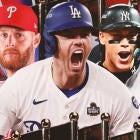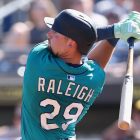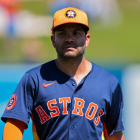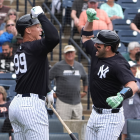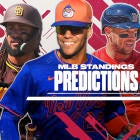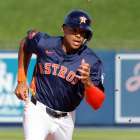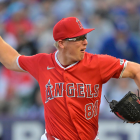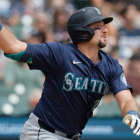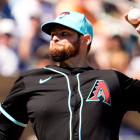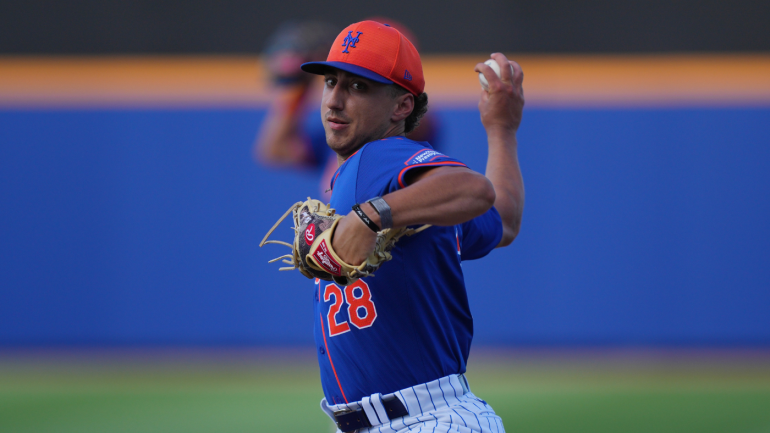
January chugs along and that can mean only one thing around these parts: it's time to rank minor-league prospects. Every team across the majors is selling hope to their fans: some are selling it in a more immediate fashion, in the form of active offseasons full of free-agent signings and trade acquisitions. Others, meanwhile, are selling it in the personage of prospects who could make the difference over the coming years.
CBS Sports is underway examining the top three prospects in each organization. Our definition of "prospect" is simple: does that player have rookie eligibility remaining for the 2025 season? If so, they're a prospect; if not, that's probably why your favorite young player is absent from the proceedings.
As always, these lists are formed following conversations with scouts, analysts, player development specialists, and other talent evaluators around the industry. There's a fair amount of firsthand evaluation, statistical analysis, and historical research mixed in, too. Plus a heaping of personal bias -- we all have certain traits and profiles that we prefer over others, there's no sense pretending otherwise.
Keep in mind that there's no one right answer with these sorts of things. Besides, these are merely our opinions, meaning they have no actual bearing on the future. We already published our ranking of the top 25 prospects in all of the minors.
With all that out of the way, let's get to ranking the top three prospects in the New York Mets system.
1. Brandon Sproat, RHP
The short hook: Mid-rotation starter waiting on the call
The Mets liked Sproat so much that they drafted him twice: first in 2022, then again in 2023. He's en route to validating their obsession, having compiled a 3.40 ERA and a 3.12 strikeout-to-walk ratio in his professional debut. Sproat delivers a full arsenal using a whippy arm action. His mid-90s fastball has a dead zone shape that makes it likely to play below its speed. Luckily, Sproat atones for that by deploying several above-average secondaries, including a very good changeup and sweeper. He scuffled during his initial run at Triple-A, but there's every reason to believe he'll right the ship and reach Citi Field sometime this summer. MLB ETA: Summer 2025
2. Jett Williams, CF/MIF
The short hook: Up-the-middle athlete with injury, priority questions
Williams was limited to 33 regular season games last year because of wrist surgery. When he was available, he batted .215/.358/.298 across three levels while continuing to showcase a mismatched skill set. Williams has always had more strength than his 5-foot-6 frame suggests, but he's routinely posted ground-ball rates that would put him in company with the likes of Yordan Alvarez, Brent Rooker, and other sluggers with more quantifiable power. (His max exit velocity was 107.5 mph, or Jeff McNeil territory.) As a result, Williams hits a lot of harmless fly balls that suppress his batting average (.252 career) and hamper his output. His eagerness to walk and his above-average athleticism (he seems more likely than not to end up in center field) give him value. It is fair to wonder if he would benefit from reducing his attack angle and leveraging his wheels instead of trying to milk as much slugging as possible. MLB ETA: Summer 2026
3. Carson Benge, OF
The short hook: Former two-way player with offensive upside
Benge, the 19th pick in last summer's draft, spent his collegiate career playing both ways. He showed enough competence on the mound that some talent evaluators gave him an early second-day grade as a pitcher. Nevertheless, he offers more upside at the dish thanks to impressive bat-to-ball and zone-management skills. Benge's exit velocities hint at above-average raw power, but he'll need to do a better job of lifting and pulling the ball to maximize his slugging output. If he can accomplish that -- and it seems possible given that he's now focusing exclusively on hitting -- he could go down as a draft-night steal in due time. MLB ETA: Summer 2027
![[object Object] Logo](https://sportshub.cbsistatic.com/i/2020/04/22/e9ceb731-8b3f-4c60-98fe-090ab66a2997/screen-shot-2020-04-22-at-11-04-56-am.png)










